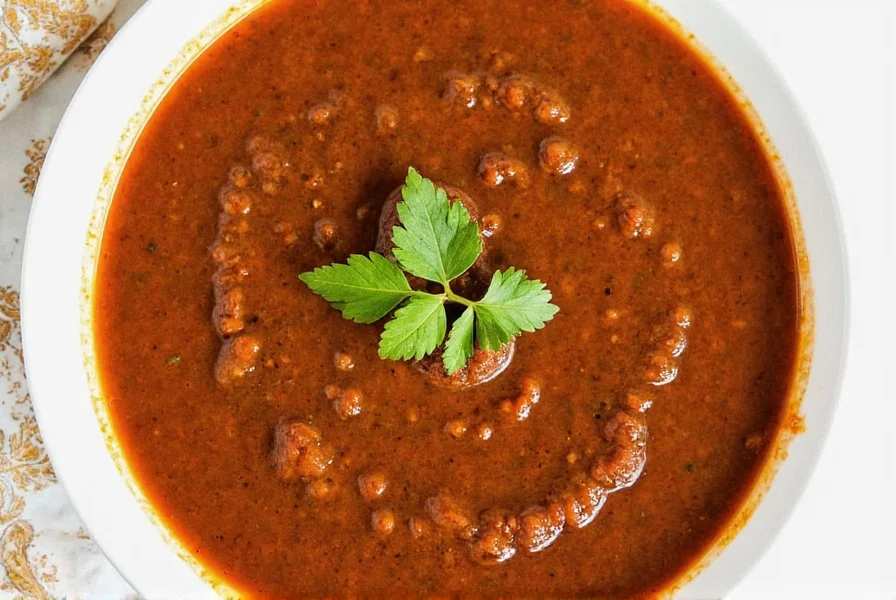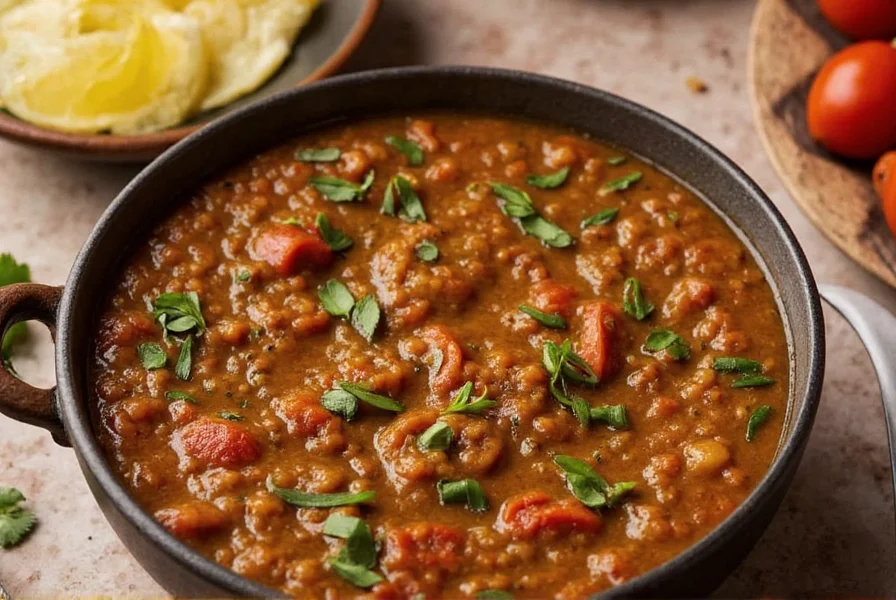Understanding what chermoula is goes beyond a simple ingredient list—it's a culinary tradition that brings the essence of North African cooking to your table. This versatile sauce has been used for centuries across Morocco, Algeria, and Tunisia, where it serves as both a marinade to tenderize proteins and a finishing sauce that elevates simple ingredients.
Origins and Cultural Significance of Chermoula
Chermoula (also spelled charmoula, chermoula, or charmoula) has deep roots in North African culinary traditions, particularly in Moroccan coastal communities. The name likely derives from the Arabic word "chermoul" meaning "to fry," reflecting its original purpose as a marinade for fish before cooking.
Historically, chermoula was created as a practical solution for preserving and enhancing the flavor of freshly caught fish in regions where refrigeration wasn't available. The combination of acidic lemon juice, antimicrobial garlic, and oil created a natural preservation method while infusing flavor. Today, it remains a staple in North African households and has gained international popularity as global cuisine enthusiasts discover its versatility.

Core Ingredients That Define Authentic Chermoula
The magic of chermoula lies in its balance of fresh herbs, aromatic spices, and bright acidity. While regional variations exist, the essential components include:
| Ingredient Category | Key Components | Flavor Contribution |
|---|---|---|
| Herbs | Fresh cilantro, flat-leaf parsley | Grassy, fresh base note (cilantro provides distinctive citrus notes) |
| Aromatics | Garlic, sometimes shallots | Pungent, savory depth that mellows when marinating |
| Spices | Ground cumin, paprika (sweet or smoked) | Earthy warmth and subtle heat |
| Acid | Fresh lemon juice | Bright acidity that balances richness and preserves freshness |
| Base | Extra virgin olive oil | Rich mouthfeel that carries flavors and tenderizes proteins |
Regional Variations Across North Africa
While the basic chermoula recipe remains consistent, regional differences reflect local ingredients and preferences:
- Moroccan coastal version: Features more cilantro and lemon, optimized for fish preparation
- Tunisian variation: Often includes harissa for added heat and complexity
- Algerian interpretation: May incorporate preserved lemons for deeper citrus flavor
- Modern adaptations: Some chefs add saffron, orange zest, or even a touch of honey for balance
These variations demonstrate how understanding what chermoula is means recognizing its flexibility—it's not a rigid recipe but a culinary concept that adapts to available ingredients and personal taste preferences.
Practical Applications: How to Use Chermoula in Your Cooking
Learning what chermoula is naturally leads to discovering how to use this versatile sauce. Its applications extend far beyond its traditional role:
As a Marinade
Chermoula works exceptionally well as a marinade for:
- Fish (especially firm white fish like cod or halibut)
- Chicken (thighs and breasts)
- Lamb (chops or shoulder)
- Vegetables (cauliflower, eggplant, zucchini)
For best results, marinate proteins for 30 minutes to 2 hours (fish) or up to 24 hours (chicken or lamb). The acid in the lemon juice begins to "cook" delicate fish quickly, so shorter marinating times are recommended.
As a Finishing Sauce
Chermoula shines when used as a finishing sauce:
- Drizzle over grilled meats or roasted vegetables
- Use as a dip for bread or crudités
- Mix with yogurt for a creamy sauce
- Add to grain salads for extra flavor dimension

Creating Your Own Chermoula: A Simple Method
While commercial chermoula products exist, making your own what is chermoula sauce ensures freshness and customization. Here's a basic preparation method:
- Combine 1 cup packed fresh cilantro and parsley (roughly equal parts)
- Add 3-4 garlic cloves, 1 teaspoon ground cumin, 1 teaspoon paprika
- Stir in 3 tablespoons fresh lemon juice and 1/2 cup extra virgin olive oil
- Season with salt and pepper to taste
- Process in a food processor until mostly smooth but still textured
- Let rest for at least 30 minutes before using to allow flavors to meld
Properly stored in an airtight container, homemade chermoula will keep for 5-7 days in the refrigerator. The flavors actually improve after the first day as the ingredients harmonize.
Why Chermoula Has Endured as a Culinary Staple
The enduring popularity of chermoula stems from its perfect balance of flavor components that address fundamental culinary principles. When exploring what chermoula is, we see it embodies the chef's holy trinity of fat (olive oil), acid (lemon juice), and seasoning (herbs and spices)—the foundation of balanced flavor in global cuisines.
Unlike many marinades that rely heavily on sugar or soy sauce, traditional chermoula offers a naturally vibrant flavor profile without processed ingredients. This aligns with contemporary preferences for fresh, whole-food cooking while delivering complex flavors through simple techniques.
Frequently Asked Questions About Chermoula
What's the difference between chermoula and pesto?
While both are herb-based sauces, chermoula originates from North Africa and features cilantro, cumin, and lemon juice as key components, giving it a brighter, more citrus-forward profile. Pesto comes from Italy and traditionally uses basil, pine nuts, Parmesan cheese, and garlic, resulting in a richer, nuttier flavor. Chermoula typically contains no cheese or nuts, making it naturally dairy-free and nut-free.
Can I make chermoula without cilantro?
Yes, if you dislike cilantro or have the genetic trait that makes it taste soapy, you can create a cilantro-free chermoula. Simply increase the amount of flat-leaf parsley to 2 cups and consider adding a small amount of fresh dill or mint to compensate for the missing flavor dimensions. Some Tunisian variations use more parsley as the primary herb anyway, so this adaptation remains authentic to certain regional styles.
How long does homemade chermoula last in the refrigerator?
Properly stored in an airtight container with a thin layer of olive oil on top to prevent oxidation, homemade chermoula will maintain its vibrant color and flavor for 5-7 days in the refrigerator. The flavors often improve after 24 hours as the ingredients meld together. For longer storage, you can freeze chermoula in ice cube trays and transfer the frozen cubes to a freezer bag for up to 3 months.
Is chermoula typically spicy?
Traditional chermoula isn't inherently spicy, but heat levels can be adjusted to preference. The base recipe includes paprika, which can range from sweet to hot depending on the variety used. Many modern recipes include a pinch of cayenne pepper or a small amount of harissa for those who prefer a spicy chermoula. If you're exploring what chermoula is in its most authentic form, the Moroccan coastal version tends to be mild, allowing the herb and citrus flavors to shine.
What proteins work best with chermoula marinade?
Chermoula pairs exceptionally well with fish (particularly firm white fish like cod, halibut, or sea bass), chicken (thighs and breasts), and lamb. Its bright, herbaceous flavor complements the richness of these proteins without overwhelming them. For fish, marinate for 30-60 minutes; for chicken, 2-4 hours; and for lamb, up to 24 hours. Chermoula also works beautifully with hearty vegetables like cauliflower, eggplant, and zucchini when preparing vegetarian dishes.










 浙公网安备
33010002000092号
浙公网安备
33010002000092号 浙B2-20120091-4
浙B2-20120091-4